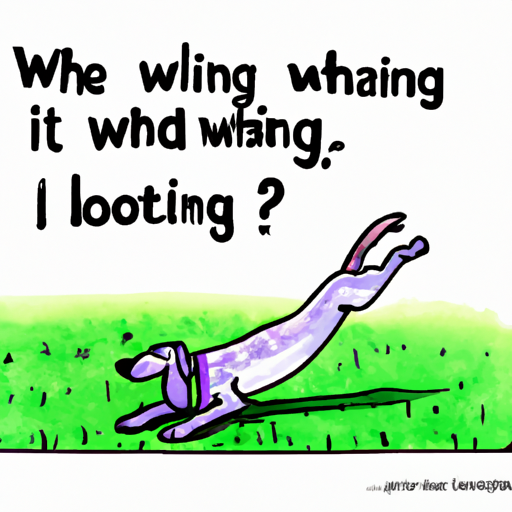If you’re a dog owner, you’ve likely seen your furry friend stretch out in a peculiar way, with their hind legs extended straight behind them. This adorable behavior is known as splooting. But what exactly is splooting in dogs? Why do they do it? Is it a cause for concern? This article will delve into the world of splooting, answering these questions and more.
Table of Contents:
- What is Splooting in Dogs?
- Why Do Dogs Sploot?
- Is Splooting Good or Bad for Dogs?
- Splooting: Not Just for Dogs
- Frequently Asked Questions
Key Takeaways:
- Splooting is a common and natural behavior in dogs.
- It helps them stretch their muscles and cool down.
- It’s usually not a cause for concern, but excessive splooting could signal a medical issue.
What is Splooting in Dogs?
Splooting, a term coined by the internet, refers to the way a dog lays down by stretching out its hind legs directly behind its body. It’s as if they’re doing a doggy version of a split. While most commonly associated with dogs, other animals like cats and rabbits have also been observed splooting. It’s a delightful sight, often making for a hilarious and cute photo opportunity.
You can learn more about different dog behaviors on OneTopDog.
Why Do Dogs Sploot?
There are several reasons why your dog might choose to sploot.
- Cooling Down: Dogs don’t sweat like humans. One way they cool down is by pressing their bellies, where fur is often thinner, against a cool surface. Splooting allows maximum belly exposure, helping them cool down faster.
- Stretching: Splooting can also serve as a good stretch for your dog’s hips and leg muscles. Puppies, who are more flexible, tend to sploot more often.
- Comfort: Sometimes, dogs just find it comfortable to sploot!
For more insights into understanding your dog’s body language, you can visit OneTopDog’s guide.
Is Splooting Good or Bad for Dogs?
In most cases, splooting is completely normal and harmless. It’s just another endearing doggy behavior. However, it’s important to be aware that excessive splooting can sometimes indicate health issues, like hip dysplasia or arthritis, especially in older dogs. If you notice your dog splooting a lot, or showing signs of discomfort while doing it, it may be worth a visit to the vet.
To know more about common dog health issues, check out OneTopDog’s guide here.
Splooting: Not Just for Dogs
While dogs are most famous for splooting, they’re not the only animals that do it. Cats, rabbits, and even birds have been spotted in a sploot. Each species has its own reasons for splooting, whether it’s to stretch, relax, or cool down.
For more fun animal facts, you can explore this article.
Frequently Asked Questions
-
Do all dogs sploot?
Not all dogs sploot. It depends on their flexibility and personal comfort. Puppies and certain breeds like Corgis and Dachshunds are known to sploot more often. -
Is splooting a sign of hip dysplasia?
While splooting is usually harmless, excessive splooting can sometimes be a sign of hip dysplasia or other joint issues, especially in older dogs. If you’re concerned, it’s best to consult a vet. -
Can I encourage my dog to sploot?
It’s best to let your dog sploot naturally. Forcing them into position could potentially harm their joints. -
Why is it called ‘splooting’?
The term ‘splooting’ is an internet-created word. It’s a playful term that imitates the sound of a dog flopping down onto a surface.
By understanding behaviors like splooting, you’re taking a step closer to understanding your dog’s needs and ensuring their well-being. So, the next time you see your dog sploot, you’ll know they’re either cooling down, stretching, or simply getting comfortable. And don’t forget to capture the adorable moment!



